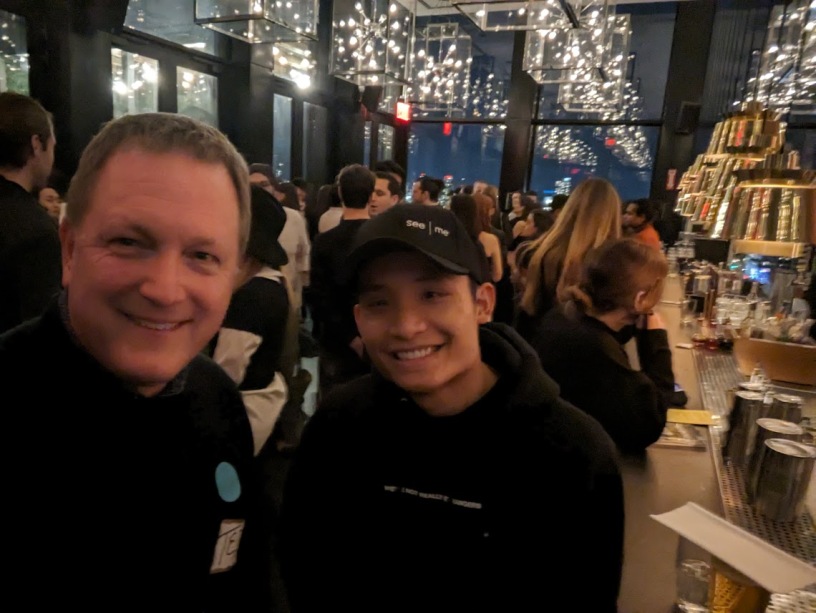Andrew Yeung arrived in New York in 2020 during the pandemic with a job, but few connections. He was 24 and grew up in Hong Kong, Shanghai, Taiwan and Toronto.
With the city largely closed, he turned to social media to build a friend group.
He posted an open invitation on Twitter and Reddit to meet in Central Park. Fifty people showed up.
The passion to connect people led to small dinner parties and larger cocktails and eventually 1,000-person parties on the roof of the Williamsburg Hotel.
He’s now hosted more than 26,000 people at events, some of which are sponsored by Fidelity. The parties attract CEOs, founders, fintech engineers and VCs.
He did this in his “free time,” while working as a product lead first at Meta and then Google. For the most part, it didn’t cost him any money.
It’s a quintessentially New York story. But also a tale for the modern era.
Andrew bootstrapped his way into throwing the best parties for the most important industry in America shortly after graduating college.
And he did it in the world’s most competitive city — a place with an entrenched events business — even though he had never worked in the industry and wasn’t backed by a media organization or other institution.
I’ve been to half a dozen of Andrew’s “mixers,” and they are better than any networking event I’ve ever experienced.
He arranges parties the way Kobe played basketball, with a tremendous degree of intentionality. He’s constantly reviewing the “tape” to make events more accessible, entertaining and meaningful for attendees.
“It’s about putting the right people in the room,” Andrew told me at an event this week at the rooftop bar of CloudM on the Bowery.
Andrew’s playbook:
–Invite people publicly via social media
–Review applicants based on LinkedIn profiles
–Select “kind” people most likely to contribute
–Send a pregame email to connect small groups
–Deploy volunteers to facilitate networking
The events are free to attend. You just have to apply and be selected.
Everyone wears nametags (something considered gauche by many organizers, but very useful.)
People are assigned a group signaled by a color-coded dot. The colors signal your intention for the evening i.e. fundraising, investing or meeting people.
The most significant element is publicly inviting anyone and then hand-selecting the people who will make the event a success, with success being measured by the quality of networking.
Established organizations don’t work this way. Companies invite existing clients or prospects. Organizations invite donors. Everything is focused on and rated by sales.
It would be considered madness for a big company to host a free cocktail for random city dwellers, including their competitors. How would they know if it paid off?
And yet, the people at Andrew’s events are the kind of people companies would want to attract. They are raising money for startups or making investments. There are unusually talented and ambitious.
Andrew is proof that anything can be disrupted if you work hard and provide a better service.
Sometimes that requires someone new who ignores what’s been done before.
